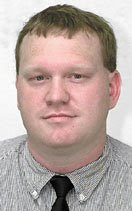 In less than a week, they'll be off and running again at Colonial Downs in New Kent, Va. While some fans lament the track's location -- it isn't terribly convenient to any metro area, though less than an hour from Richmond -- I enjoy its rural setting and in my experience the track management and staff have always been quite accommodating both for fans and media.
In less than a week, they'll be off and running again at Colonial Downs in New Kent, Va. While some fans lament the track's location -- it isn't terribly convenient to any metro area, though less than an hour from Richmond -- I enjoy its rural setting and in my experience the track management and staff have always been quite accommodating both for fans and media.What I'm not so tickled with is the stakes schedule, which is apparently limited by the configuration of its otherwise spectacular turf course.
Last year, Colonial didn't just trim, it hacked, significant distance out of a few statebred stakes races. I e-mailed the track to ask why, and a top official at Colonial called me back within 30 minutes -- I kid you not, called, not e-mailed, I told you they're accommodating -- and we discussed the matter for about a half-hour.
The Virginia Thoroughbred Association makes the decisions when it comes to statebred stakes races, I was told. And, having trouble filling some of them, I was informed by Colonial that the VTA decided shorter was better. So mile or mile-and-a-sixteenth races were carded last year at 5 1/2 furlongs instead, and mostly are again this year.
That isn't just "shorter." That's short. ... Really freakin' short.
Now, I'm a fan of turf racing, and of distance racing. Frankly, those two often go hand in hand, as grass horses frequently have a bit more European lineage and stayer influence. But I also appreciate the horses who can and do run short. Among Virginia-breds, Bop is one of my all-time favorites, and for him, shorter was always better.
But dropping the distance from 8.5 furlongs to 5.5 furlongs was unlikely to broaden the field, and last year it really didn't, even though the VTA and Colonial attempted to expand entries by turning 3-year-old only events into stakes races for 3- and 4-year-olds. The Oakley Stakes last year went off with seven horses, little or no improvement from when it was run at a distance.
That's because for every sprinter you draw with a short race, you risk eliminating a miler. I have friends among Virginia's horsemen and horsewomen who were out of the Oakley Stakes last year once they learned it was being run at 5.5f. It was just too short for their horse.
This year there are 23 nominations for the Oakley, which will be run next Sunday, June 7, on the meeting's opening weekend. We'll see how many make it to post.
The ideal compromise in my opinion would be to run these races at a "middling" distance; preferably 7 furlongs. That way the milers have to shorten up a bit, the sprinters might have to last just a little longer than they'd prefer, but in either case the connections of all might be willing to take a shot.
Trouble is, Colonial's turf course, the most beautiful (in my opinion) and widest (by point of fact, at 180 feet) grass course in the country, with up to 10 different rail configurations, apparently is restricted to either the shortest of sprints, or to route racing. It's seven-eighths of a mile in circumference with no chutes to provide for anything other than 5 or 5 1/2 furlongs, or a mile or more. (There's an abbreviated chute on the turn for home that, coupled with the widest rail settings, permits the 10 furlong distance of the Virginia Derby-G2.)
Seems like bad planning to me.
The track has a 10-furlong dirt course, with a chute so long that in the fall, trotters can blaze their way around a one-turn mile, a configuration unique among harness courses. But at a track where a majority of the thoroughbred races are carded on the lawn, there's no such thing as a 6-, 6 1/2-, 7- or 7 1/2- furlong grass race. None. ... And that's hard for me to fathom.

I wonder what, if anything, could be done about it now. I've included an overhead shot of Colonial while under construction (above, "borrowed" from Resource International, an engineering firm that was part of the project) and track layouts ("borrowed" from the Daily Racing Form) for both Colonial (top) and Lone Star Park.

What I'm wondering is whether a diagonal chute like the one Lone Star has cut between the apex of the turn for home and final stretch, could be duplicated in reverse, so to speak, at Colonial, where the chute would run through the open grass to the left of the two lakebeds in the aerial photo, in effect short-cutting the far turn, perhaps allowing for 6- and 7-furlong distances (just guessing).
I had often wondered why there weren't races from 6 to 7.5 furlongs (or somewhere in that range) on the turf course at Colonial, but apparently wasn't smart or inquisitive enough to find out.
But other than cost (likely considerable) -- and the prospects that, perhaps, the infield grass and lakes are part of a wetlands tradeoff (read the engineer's page on the project) that couldn't be altered -- I don't know why Colonial's track management wouldn't want additional configurations and distances.
I'm open to comments here, particularly from VTA members, Colonial Downs staff, or anyone with the inside skinny on why Colonial was built the way it was, and whether modifications to the course are feasible now.








No comments:
Post a Comment
I welcome comments, including criticism and debate. But jerks and the vulgar will not be tolerated.
Thanks!